Minttu buys torn clothes just to repair them—13 reasons to love mending!
Repaired garments are durable and unique, and more people than ever consider them beautiful and on-trend. There are many reasons why mending, patching, and repairing benefit both us and the world.
1. It’s easy! Basic stitches are all you need.
Softened during the years of use, well-traveled, colorfully repaired—and durable. These are the qualities of Minna Cheung’s favorite jeans, which are nearly ten years old.
When the pants tore at the crotch about four years ago, Minna patched up the hole with an iron-on denim patch. A little later, she became intrigued by the Japanese sashiko tradition, in which garments are visibly mended with graphic patterns.
Over time, multiple layers of colorful running and cross-stitches have accumulated at the crotch. Minna has also embroidered colorful flowers along the torn edges of the back pockets.
“I figured I could take my time and experiment with how the needle and thread respond to my hand and eye. There was nothing to lose with these jeans, because if I hadn’t repaired them, they would have gone to textile recycling.”
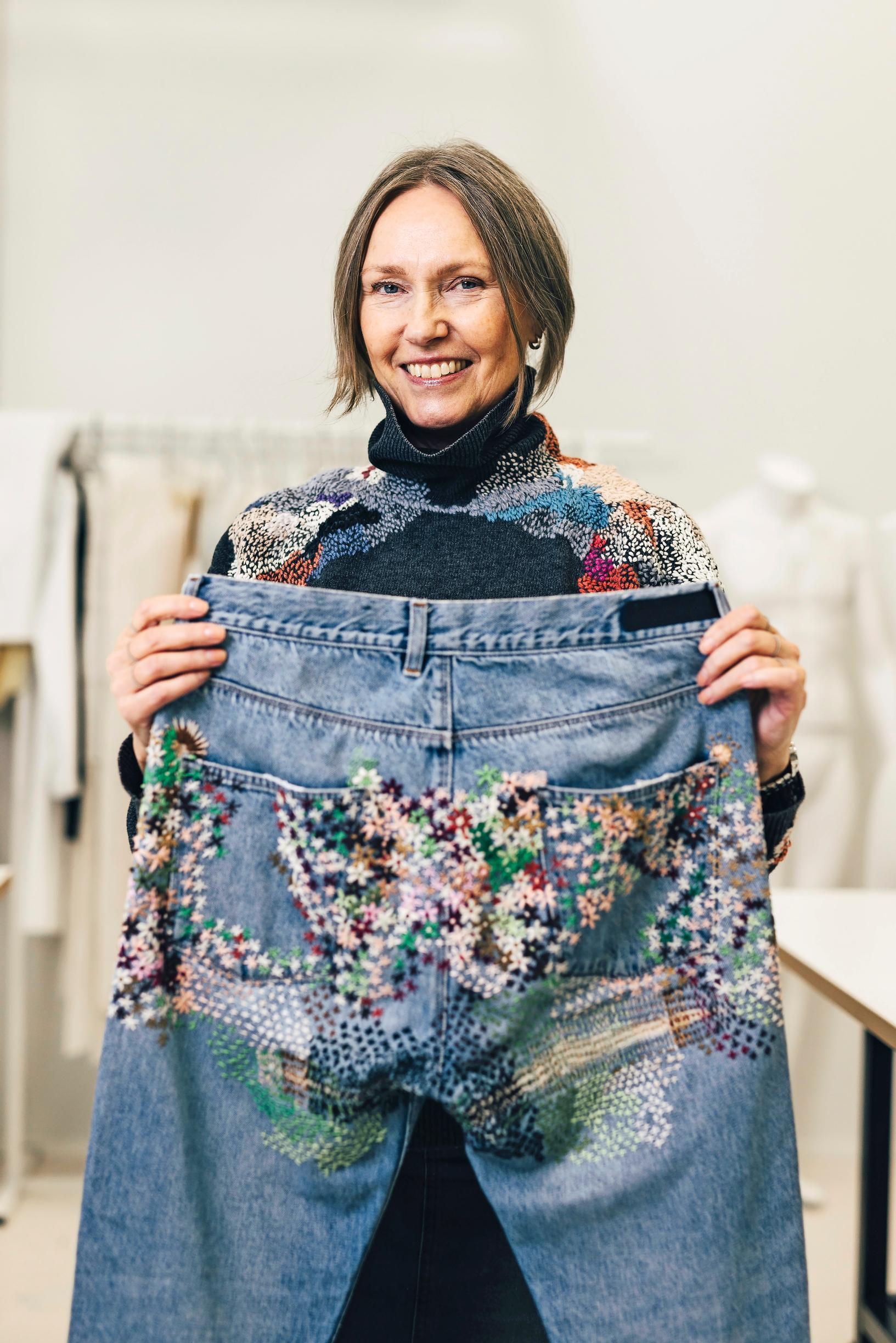
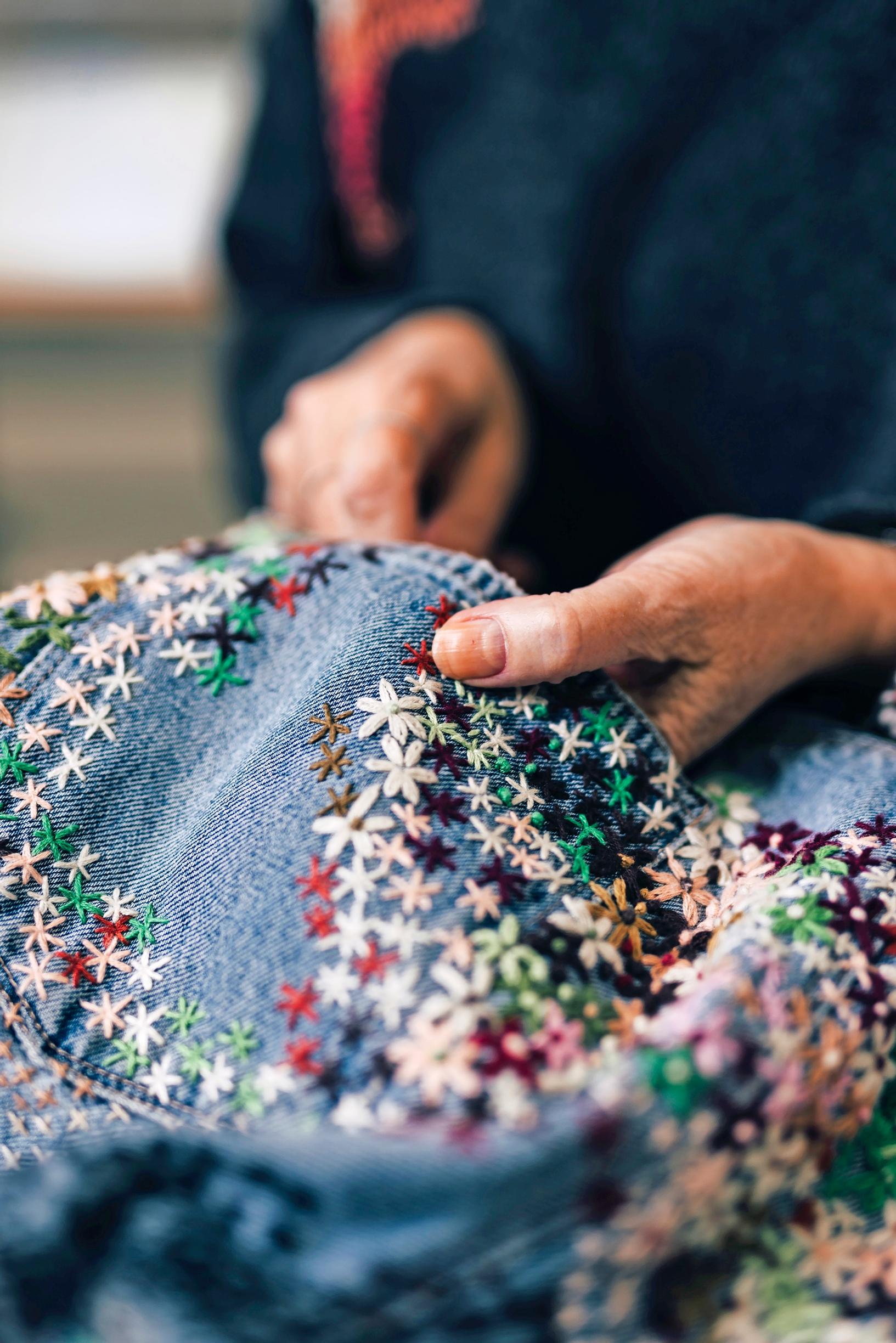
2. You’re on trend in mended clothes.
More and more often, an adult’s clothes may feature a repaired hole—and these patches no longer automatically imply limited means. They instead reflect respect for the garment and the willingness to take the time to fix it.
Visible mending is just a small trend within a bigger phenomenon. Mending techniques are taught on Instagram and YouTube; books, courses, workshops, and exhibits are dedicated to them. Clothing stores have begun to dedicate shelf space to repair supplies, such as iron-on patches, garment bandages, or colorful embroidery threads.
Even The Finnish Crafts Organization Taito chose repairing and restoring as the crafting technique of the year 2025. Mending and patching held the same title in 2021.
75% of Finns patch, mend, or otherwise repair their textiles at least occasionally. 19% of respondents do so several times a month.
Source: Finnish Crafts Organization Taito survey
3. You will reduce textile waste.
The repairing and mending trend is necessary in our current era. There are already so many clothes in the world that they could dress the next six generations, according to the estimation of the British Fashion Council. Over the last three decades, global consumption of textile fibers per person has doubled.
The textile industry is a significant producer of greenhouse gases. Clothing manufacturing and transport consume natural resources, and when textiles quickly turn into rags, they are shipped in containers from Western countries to Ghana, Kenya, and other African nations. There, textile waste causes enormous environmental and health issues.
4. The lifespan of your clothes will extend and your carbon footprint shrink.
Mending is part of the circular economy, which counters overconsumption, says Minna Cheung. She works as a senior lecturer in wearable design at the Institute of Design and Fine Arts of the LAB University of Applied Sciences in Finland.
“The aim of the circular economy is to prolong the service life and lifecycle of clothes and other products. Under this umbrella, there are different strategies and methods, and mending is one of them.”
Looking at the cycle of the circular economy, mending extends the last stretch of a garment’s life. As for the textile industry, efforts at the start of the cycle are focused on things like how clothes are patterned and which materials are used to ensure they will withstand wear, repair, and finally reuse or material recycling, Minna explains.
“For instance, in modular design, garments are patterned in a way that makes it possible to take them apart easily, and the most heavily worn parts can easily be replaced. On the other hand, design can also consider how the wearer can adjust a garment’s size if their own size changes.”
5. You can create jobs—having something repaired for you is also repairing!
Repairing a garment is also a sustainable act because each wear lowers the item’s climate impact slightly—as long as you mend or have it mended in a durable way, and don’t send it off to be fixed somewhere far away, Minna says. She enjoys mending her own clothes but points out that not everyone needs to do it if time, skills, or resources are scarce.
This is where the broader circular economy strategy comes into play once again. On a larger scale, various repair services will likely become more common in the future. This could be encouraged by lowering the value-added tax on repair services. Sweden has already done so.
6. Mending reduces the need to buy new.
“From a climate perspective, the key isn’t how long you’ve owned a garment, but how many times you’ve worn it,” Minna says.
Mending makes it easy to increase the number of wears, while simultaneously reducing the need to buy new clothes.
But there’s more magic to repairing clothes than just that.

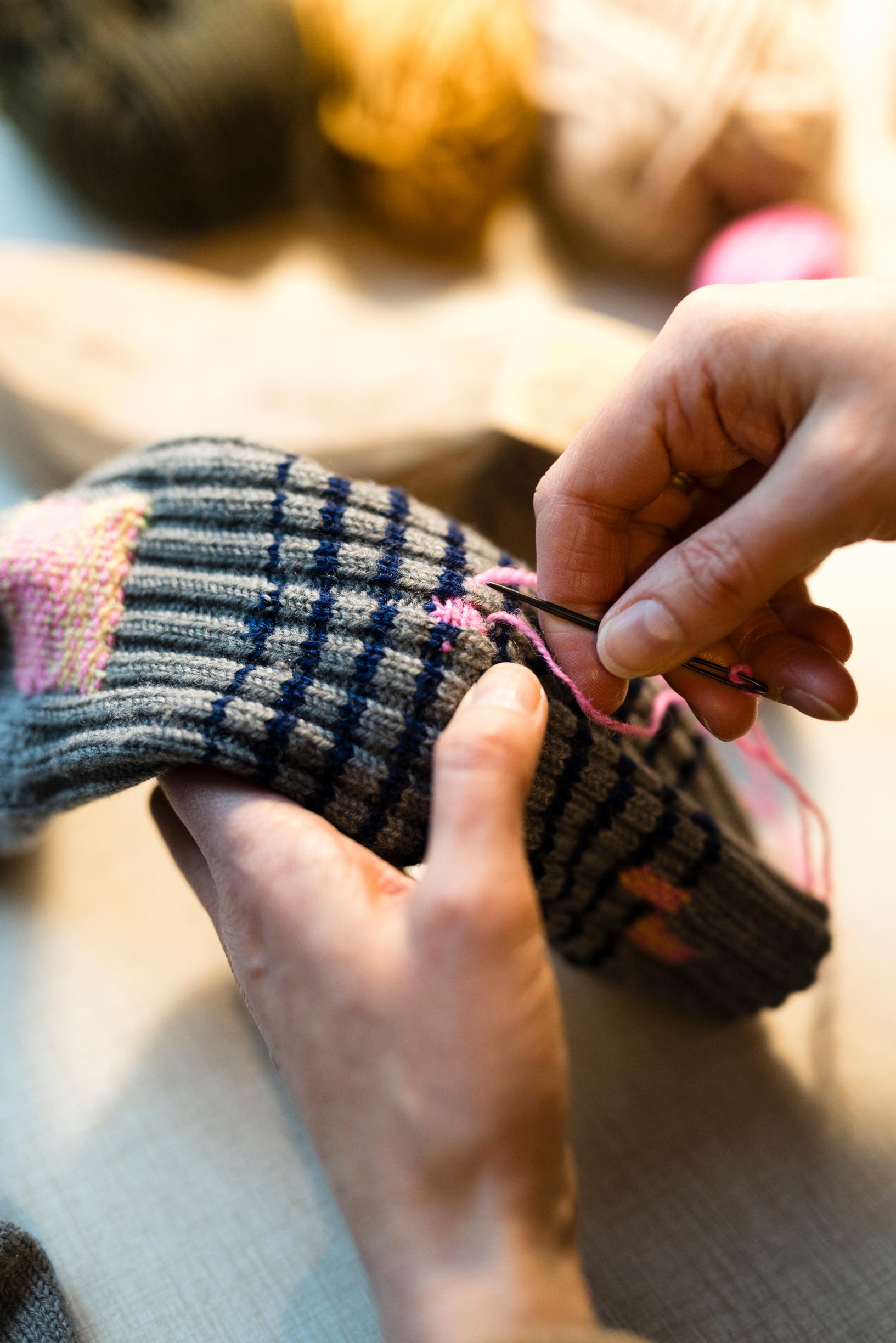
7. You can make truly budget-friendly secondhand purchases.
Minttu Wikberg has a particular dilemma. She repairs everything from cotton socks to wool sweaters, but there isn’t always enough to mend at home. Therefore, she sometimes buys damaged clothes at flea markets.
“I’d love to find a really torn-up garment to repair, but they’re not that easy to come by. In Finland, you rarely see badly damaged clothes sold at flea markets.”
When she does come across one, she can snap it up for just a euro or two.
As a clothing and textile designer, mending has become both work and an art form for Minttu over the past couple of years. When the Finnish Crafts Organization Taito named mending and patching as the craft technique of the year in 2021, they organized an exhibition around the theme. Anyone could apply with their own pieces, and Minttu decided to participate.
“I had been thinking about doing some sort of moss embroidery for quite some time. It’s a metaphor for how nature covers its wounds with undergrowth—like on a clear-cut area. That’s when I realized I could do moss embroidery for the mending-themed exhibition.”
And so Minttu began developing a three-dimensional, lively mending technique. She used it to patch the worn-out elbows on her spouse’s wool sweater and to decorate torn wool socks with new soles.
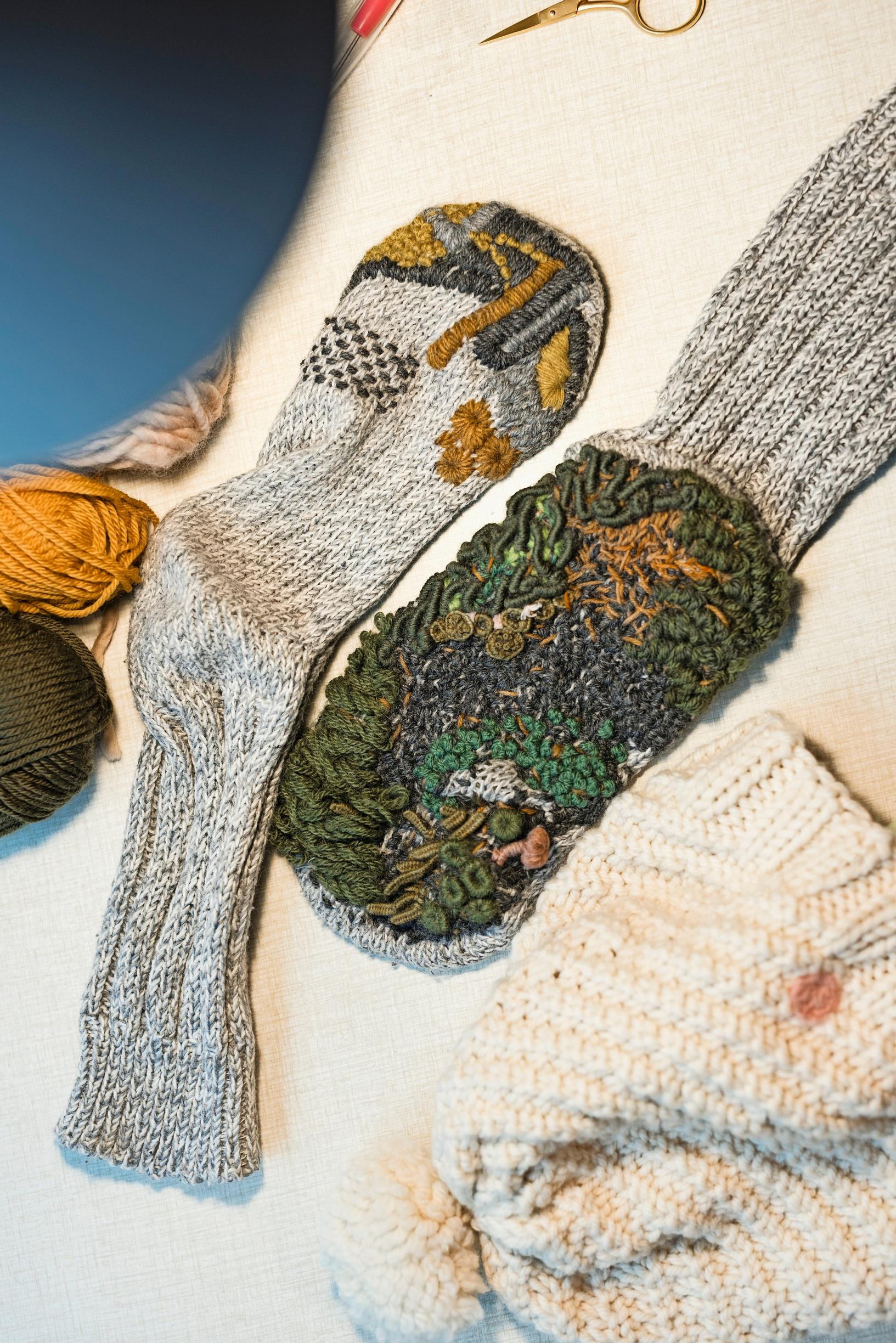
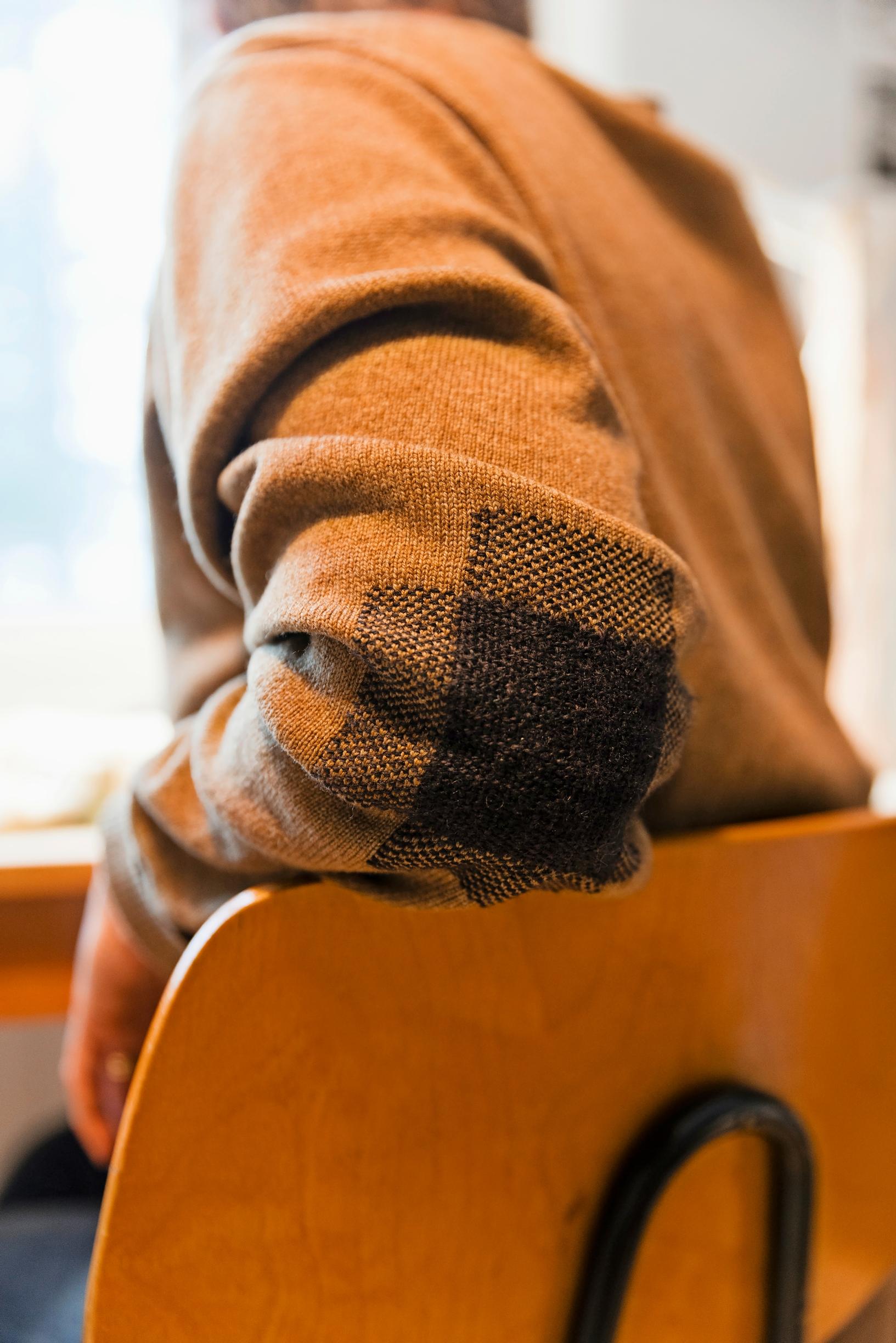
8. There are no rules—let your creativity run free.
Minttu’s mended Clothes, for which she has used various techniques, have since been displayed in places like the Finnish Design Museum. The joint exhibition organized by the Design Museum and the Museum of Finnish Architecture, called FIX: Care and Repair, ran from April 2024 to January 2025. Minttu also held mending demonstrations at the exhibition. In addition, she teaches mending on adult education center courses. For these kinds of events, she sometimes looks beyond her own closets for items to repair.
“I value textiles, and throwing them away has always felt difficult. I used to try repairing inconspicuously, but with visible mending, I’ve discovered a new dimension to the process.”
Minttu has noticed that repairs can channel creativity. In addition to moss embroidery and traditional mending techniques, she has also fixed torn knits by needle-felting.
“What’s especially nice about the philosophy of visible mending is that there really are no rules. There’s no centuries-old tradition here that you have to follow, so everyone can mend as they like. My best advice is to pick up a needle and thread, and see what happens.”
9. ...or return your garment to the look you originally loved.
Minttu does have one personal principle for her own everyday clothes. If a garment has a certain style and she likes it that way, she doesn’t want to alter its look by repairing it. In that case, she often opts for an inconspicuous patch—or even removes her earlier repairs. She patched her favorite cardigan three times before she felt pleased with the style. The entire process took two years. Now, the elbows on the beige cardigan feature carefully darned sections in thin black yarn.
“Darning or unravelling don’t bother me. It does annoy me how easily some cotton socks fall apart, though. Still, repairing clothes is calming for me. Many mending techniques can bring you to a flow state as your needle moves in a repetitive pattern,” Minttu says.
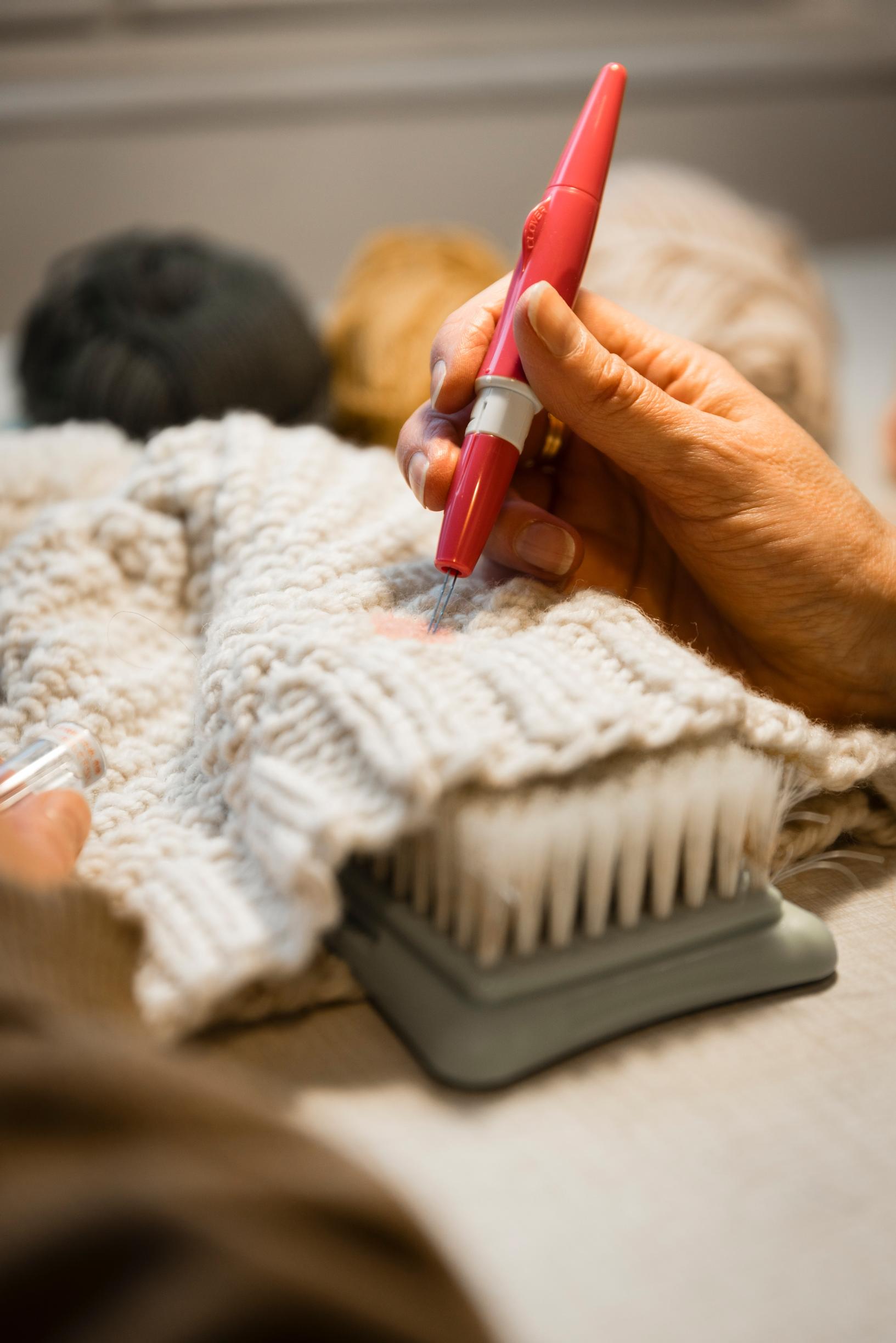
10. Focusing on mending calms your mind.
Needle and thread were recognized as therapeutic tools as far back as a century ago, says sustainability consultant Marium Durrani. She teaches sustainable fashion and the sociology of clothing at Metropolia University of Applied Sciences in Helsinki.
“During World War I, Australian and New Zealand soldiers in hospitals were given embroidery projects. The hospitals could treat both physical and mental wounds this way. Doing something slowly with your hands connects you with your body and the material you’re holding. That kind of slow, focused activity calms down the nervous system,” Durrani says.
Durrani completed her doctoral research at Aalto University on communal repair events in Finland, Scotland, and New Zealand. According to her, the pop-up style, open repair events that have become more common in recent years have brought repair techniques and practices into the spotlight, earning them recognition and esteem.
This is a new development, as mending has traditionally been a gendered and private practice: women would mend clothes alone at home.
11. You’ll get company!
With the rise of communal repair cafés and courses, mending has become accessible to a broader audience. In repair workshops, people of different ages and backgrounds come together to share knowledge, skills, and tools. Repairing clothes side by side with others promotes well-being in many ways, Durrani explains.
“Community-based mending brings people together and empowers them. Many young people in particular experience climate anxiety, and repairing clothes with others can help alleviate that.”
“Especially in Western countries, people are very dependent on someone else carrying out tasks related to their clothes. Learning these practices—long forgotten on a wide scale—helps strengthen your sense of involvement.”
12. You’ll cultivate a healthier relationship with your body.
Extending the lifespan of your clothes also relates to a healthier body image, according to a recent study by the University of Vaasa. This may be because if you don’t actively look for or buy new clothes, you’re not exposed to appearance-focused marketing or comparing yourself to others. As a result, you won’t be thinking about how you could or should look.
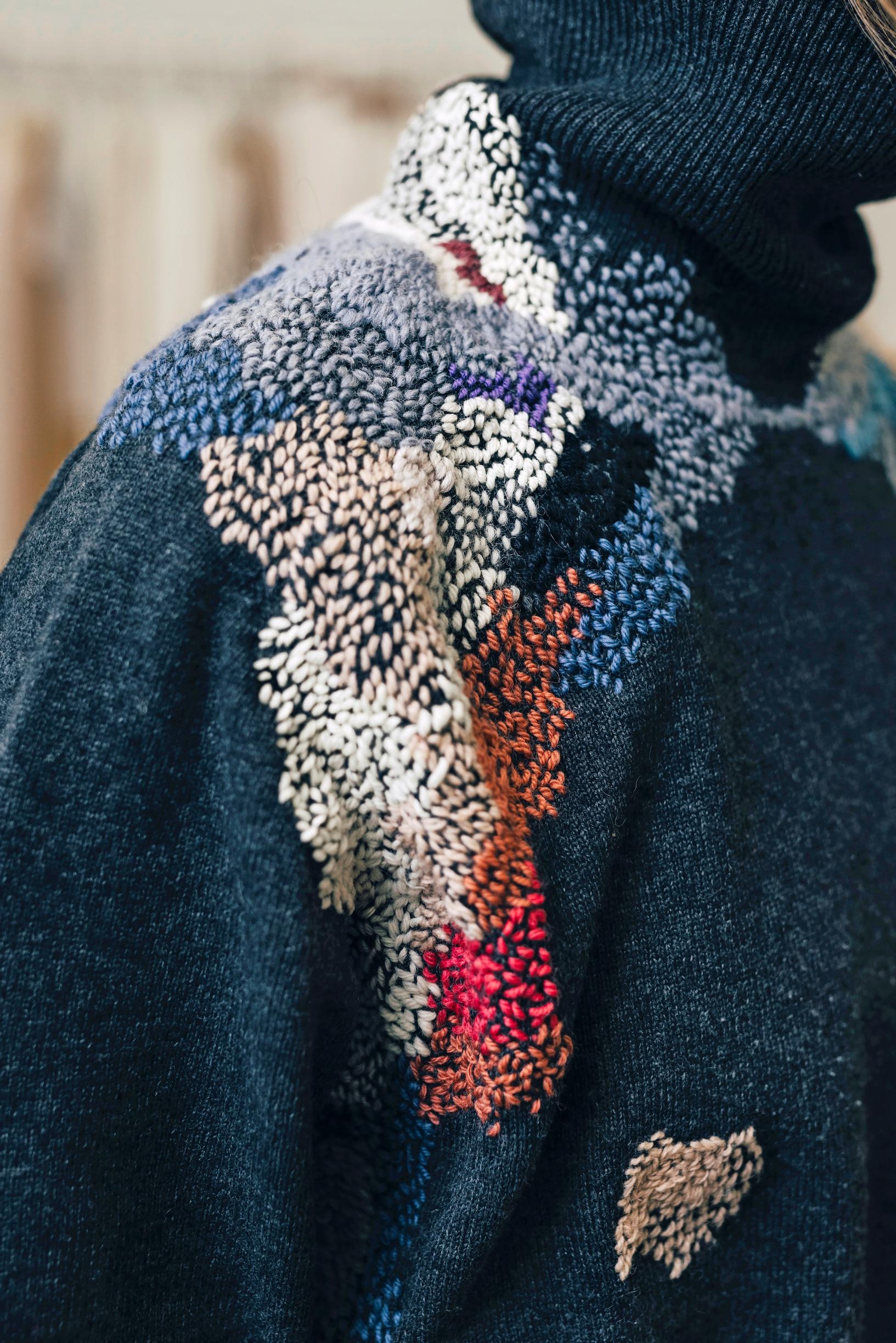

Once repaired, clothes will feel even more cherished and personal. That’s how Minna Cheung sees it nowadays.
After fixing her favorite jeans, she’s also repaired her beloved sweater, which is more than 40 years old. When it became dinner for fur beetles, she couldn’t find anything that as nice as it. The sweater was just the right thickness, and the dark gray basic look was easy to pair with different bottoms.
Minna couldn’t stop working on fixing her sweater even once the holes were gone.
“I got a bit carried away with that sweater. It was a bit dull, so I started reinforcing areas prone to friction just to decorate them, even before they tore.”
13. You can wear your favorite clothes more often.
According to Minna, another great aspect of knowing how to mend is that you don’t have to save your favorite clothes for special occasions.
“I can wear them all the time, and I fix them whenever holes appear on them. I don’t tuck them away in a repair box first; I just mend them while I watch TV. That way they will stay in use constantly.”
Well, there are a couple of exceptions to that.
In the depths of her closet, Minna keeps two valuable sweaters that have been waiting for repairs for quite some time. One of them is a natural white sweater that got stained years ago. Occasionally, Minna has worn it with a brooch covering the stain. Now she’s envisioning a repair that could conquer the blemish once and for all.
“I’ve been thinking about whether I could cover the stain by adding studs on the sweater. But I don’t want to rush it. I’m waiting for the sweater to tell me how it wants to be repaired. The worth it.”


